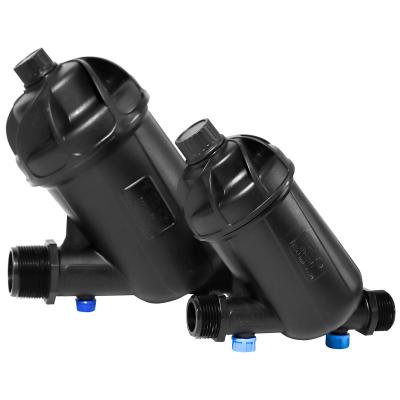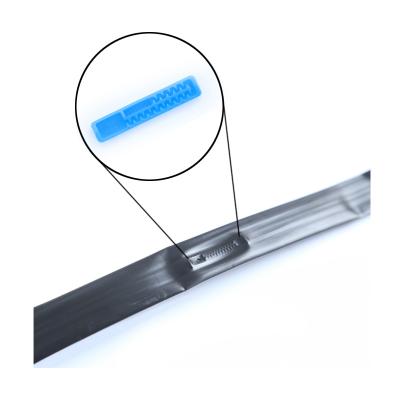Drip Irrigation Technology to Improve Wheat Quality
With the adjustment of planting structure, improving the quality of wheat has become the theme of wheat production. Wheat quality is affected by a variety of factors such as variety, environment, ecology and cultivation measures, there are various ways to improve the quality of wheat, in addition to the selection of high-quality varieties, through some cultivation and drip irrigation measures can also significantly improve the quality of wheat. The key technologies are as follows.
Reasonable nitrogen fertilization
The nitrogen required for wheat growth and development and grain formation is mainly obtained from the soil, and the effect of soil nitrogen application on wheat grain quality is very obvious. The amount of nitrogen fertilizer applied should depend on the ground strength, variety and other cultivation conditions. Under general high yield conditions, the total amount of nitrogen applied per hectare is 225-270 kg of pure nitrogen, and the ratio of base fertilizer to follow-up fertilizer is 6:4 or 5:5. Follow-up fertilizer should be applied in three stages: overwintering, nodulation and gestation1, especially to ensure that the nodulation and gestation follow-up. In addition to soil application of nitrogen, can also be foliar spray nitrogen, fertilizer to urea is good, spraying period for more than half kernel to the end of lactation, spraying concentration and quantity should not be too high, in order not to burn the leaves as appropriate, the concentration is generally 2%-10%, the amount of pure nitrogen sprayed per hectare 37.5 ~ 75Kg.
Appropriate increase of potassium fertilizer
Research has proved that the application of potassium fertilizer in the wheat field with potassium deficiency has a good effect on yield, because potassium has a close relationship with the metabolism of nitrogen, potassium can promote protein synthesis, thus improving protein content, so when the supply of nitrogen and phosphorus is sufficient to increase the application of potassium fertilizer is beneficial to the yield and quality of the seeds. According to the study, the yield is most stable when 45-90 kg of active ingredient of potassium nitrate is applied per hectare; when 60-105 kg of active ingredient is applied, the yield is stable and the protein content is also high. For the application period, the protein content of the seeds gradually increases as the application period is delayed, and the best period is the flowering period. Proper application of potassium fertilizer can improve the quality of wheat, but there must be sufficient supply of nitrogen and phosphorus to show good results.
Proper application of micronutrients
In addition to nitrogen, phosphorus and potassium, other elements of wheat require small amounts, but have a greater impact on wheat yield and quality.
Boron is essential for nucleic acid and protein synthesis. Applying the right amount of boron fertilizer on soils with insufficient effective boron can effectively improve the protein content and amino acid content of wheat seeds, thus improving the nutritional quality of wheat.
Zinc is a component of a variety of enzymes, is also the activator of certain enzymes, involved in a variety of metabolic activities in plants, lack of zinc will make the wheat plant growth is hindered, yield decline, quality deterioration.
Manganese is the activator of nitrate reduction, plant deficiency of manganese will affect its use of nitrate, in the soil under the conditions of manganese deficiency, moderate application of manganese also has the role of improving the quality of wheat.
The three elements are best sprayed during the gestation period, with 0.1% boric acid solution for boron, 0.1% manganese sulfate solution for manganese, and 0.04% zinc chloride or 0.2% zinc sulfate solution for zinc.
Adequate supply of organic fertilizer
Organic fertilizer is a complete fertilizer, containing richer organic matter and various nutrients, generally increase the application of organic fertilizer can increase the protein content of the seeds. Under different fertility conditions, additional application of different organic fertilizers can improve the yield, but the effect of improving yield and quality is not the same, the effect is better when the fertility is poor, and within a certain range according to the increase in the amount of fertilizer, yield and quality subsequently improved, but from the principle of economic fertilization, the amount of fertilizer should be selected according to local conditions for the best fertilization effect.
Timely irrigation with pipe filters
It is generally believed that during the wheat reproduction period, the water is insufficient, the yield decreases, while the grain protein content increases, but the final protein yield is not high; under the condition of sufficient water, the yield can increase significantly, but the protein content does not increase or decreases. Therefore, the number of irrigation and the amount of irrigation should be determined according to the meteorological conditions. In the year of water deficiency, increasing the number of irrigation and the total amount of irrigation can improve the yield and quality; in the year of abundant water, appropriate less irrigation can also improve the grain protein content, but too much irrigation is not good for the quality, the number of irrigation is appropriate before winter, starting, plucking, filling four water, the total amount of 2250-3000m 3 per hectare is appropriate. Use of chemical control
Chemical control can regulate and control the growth and development of wheat to make changes in yield and quality. Currently, polyconazole, which is widely used in wheat, can promote dwarfing of wheat plants, effectively inhibit nutritional growth and promote reproductive growth, and has a good effect on improving wheat quality, especially when the level of nitrogen application is low, the application of polyconazole can significantly increase the protein content. The spraying of polyconazole in the first and middle stages of wheat fertility has positive effects on improving yield and quality, with the best effect from two leaves to four leaves, and the spraying of winter wheat in the north is more suitable from winter to greening, with a concentration of 200-400uI/L.



